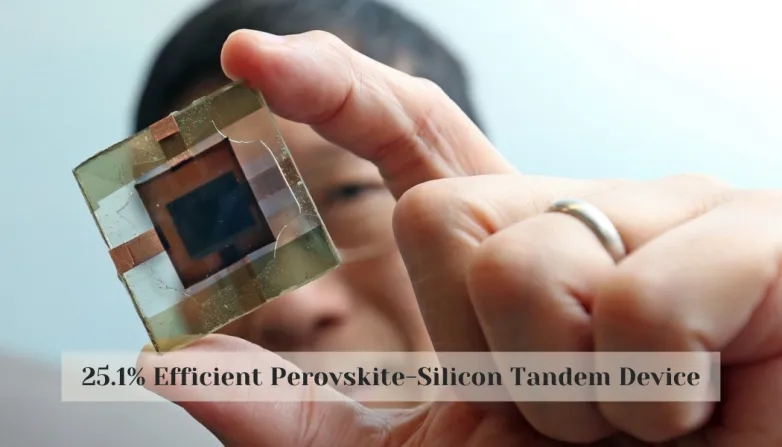25.1% Efficient Perovskite-Silicon Tandem Device
- This research team has designed a large-area two-terminal tandem solar cell that boasts a 25.2% efficiency with over 10 cm2 in area. Learn more about the lithium fluoride interlayer that helps overcome common PV cell issues.

Researchers from the University of North Carolina at Chapel Hill and Arizona State University have designed a large-area perovskite-silicon tandem solar cell with a 24 cm2 aperture area that achieved a steady-state power conversion efficiency of 25.1%. The team overcame the common issue of shunting in PV cells by placing a lithium fluoride interlayer at the interface between a hole transport layer and a wide bandgap perovskite absorber. This interlayer is the key element that reportedly improved physical contact and reduced shunting. With this, the tandem cell achieved an efficiency of 25.2%, an open-circuit voltage of 1.89 V, a short-circuit current density of 18.1 mA/cm2 and a fill factor of 0.736. This result is, according to the researchers, one of the most efficient two-terminal tandem devices reported in the literature with areas of over 10 cm2.
What Efficiency Did UNC and ASU's Large-Area Perovskite-Silicon Tandem Solar Cell Achieve?
- The team was able to reduce shunting by using a lithium fluoride interlayer at the interface between the hole transport layer and the wide bandgap perovskite absorber.
- The two-terminal tandem device achieved an efficiency of 25.2%, an open-circuit voltage of 1.89 V, a short-circuit current density of 18.1 mA/cm2 and a fill factor of 0.736.
- As a result of this research, the tandem cell achieved a steady-state power conversion efficiency of 25.1% over a 24 cm2 aperture area.
- This result is one of the most efficient two-terminal tandem devices ever reported in the literature with areas of over 10 cm2.
- The team's research has implications for improving the efficiency of large-area solar cells in the future.
Also read

